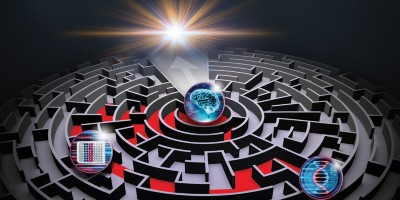Much of how the human host responds to a tumor and to anticancer therapy is still not fully fleshed out. The cytokines and other mediators involved in this response may be both allies and enemies in the quest for more effective treatments or even a cancer cure. In 'Bedside to Bench', Robert Kerbel and John Ebos discuss recent human studies in healthy individuals and people with minimal residue or no disease showing release of host-derived cytokines after antiangiogenic therapy. The increase in proangiogenic factors such as VEGF and PIGF and other cytokines involved in metastasis and tumor repopulation in a host may threaten therapeutic success but may also suggest new prognostic markers and other treatment strategies. In 'Bench to Bedside', Michael Karin and Florian Greten peruse how using JAK2 inhibitors to block STAT3 in tumors could halt cancer progression. JAK2 inhibitors, already being tested in clinical trials to treat myeloproliferative diseases, may also prove valid as anticancer drugs.

References
Murukesh, N., Dive, C. & Jayson, G.C. Br. J. Cancer 102, 8–18 (2010).
Nikolinakos, P.G. et al. Cancer Res. 70, 2171–2179 (2010).
Lindauer, A. et al. Clin. Pharmacol. Ther. 87, 601–608 (2010).
Deprimo, S.E. et al. J. Transl. Med. 5, 32 (2007).
Bergers, G. & Hanahan, D. Nat. Rev. Cancer 8, 592–603 (2008).
Jain, R.K. et al. Nat. Rev. Clin. Oncol. 6, 327–338 (2009).
Ebos, J.M., Lee, C.R., Christensen, J.G., Mutsaers, A.J. & Kerbel, R.S. Proc. Natl. Acad. Sci. USA 104, 17069–17074 (2007).
Desar, I.M. et al. Acta Oncol. 48, 927–931 (2009).
Mancuso, M.R. et al. J. Clin. Invest. 116, 2610–2621 (2006).
Shaked, Y. et al. Cancer Cell 14, 263–273 (2008).
Shojaei, F. et al. Proc. Natl. Acad. Sci. USA 106, 6742–6747 (2009).
Ahn, G.O. et al. Proc. Natl. Acad. Sci. USA 107, 8363–8368 (2010).
Pàez-Ribes, M. et al. Cancer Cell 15, 220–231 (2009).
Ebos, J.M. et al. Cancer Cell 15, 232–239 (2009).
Author information
Authors and Affiliations
Corresponding authors
Ethics declarations
Competing interests
The authors declare no competing financial interests.
Rights and permissions
About this article
Cite this article
Kerbel, R., Ebos, J. Peering into the aftermath: The inhospitable host?. Nat Med 16, 1084–1085 (2010). https://doi.org/10.1038/nm1010-1084
Issue Date:
DOI: https://doi.org/10.1038/nm1010-1084
- Springer Nature America, Inc.
This article is cited by
-
The pro-tumorigenic host response to cancer therapies
Nature Reviews Cancer (2019)
-
Balancing efficacy of and host immune responses to cancer therapy: the yin and yang effects
Nature Reviews Clinical Oncology (2016)
-
Treatment-induced host-mediated mechanisms reducing the efficacy of antitumor therapies
Oncogene (2014)
-
Antiangiogenic therapy promoted metastasis of hepatocellular carcinoma by suppressing host-derived interleukin-12b in mouse models
Angiogenesis (2013)
-
Chemotherapy counteracted
Nature (2010)


